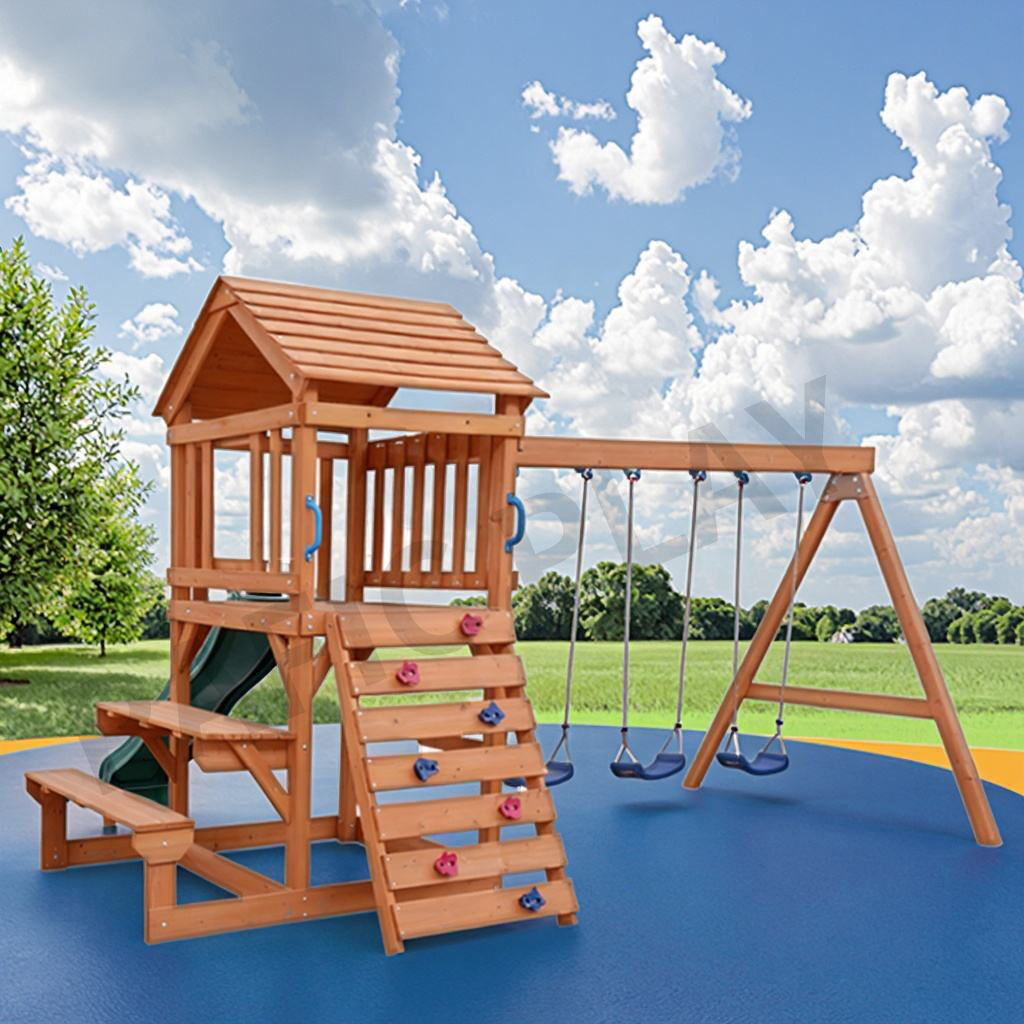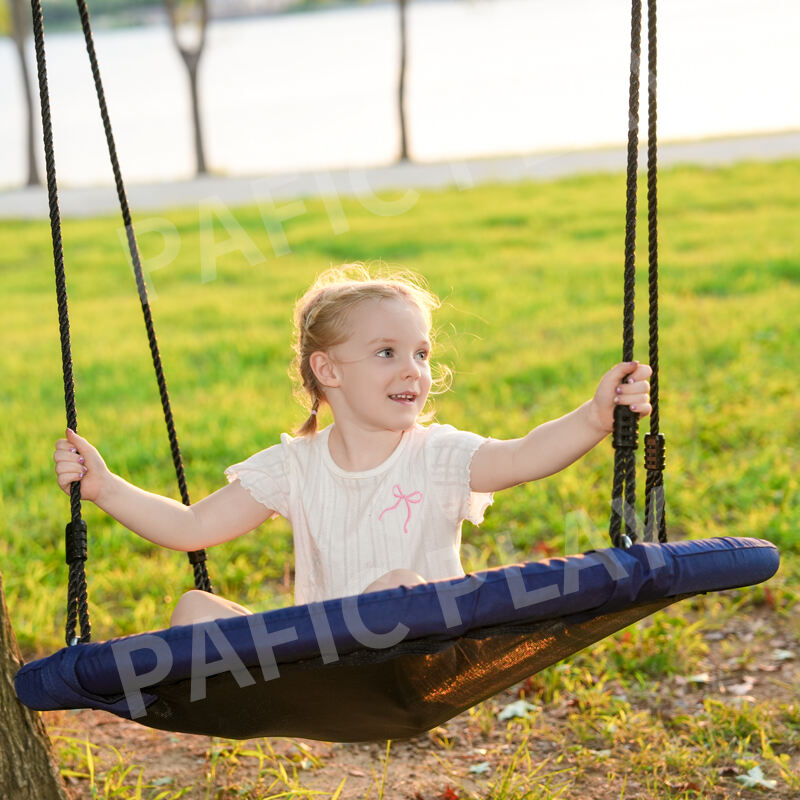An outdoor playground set serves as more than just recreational equipment - it's a vital hub for physical activity, social interaction, and childhood development. When thoughtfully designed, these play spaces become magical environments where children build strength, coordination, and lasting memories. Understanding the essential elements that make an outdoor playground set both engaging and safe is crucial for creating an space that truly enriches children's lives.
Modern playground design has evolved significantly, incorporating research-based insights into child development and safety standards while maintaining the fundamental joy of outdoor play. Whether you're planning a backyard play area or a community playground, certain key features will ensure your outdoor playground set delivers maximum benefit and enjoyment for young users.
The foundation of any outdoor playground set starts with classic structures that have proven their worth over generations. Swing sets promote balance and spatial awareness while providing the thrilling sensation of flight that children naturally seek. Slides offer excitement while helping children overcome fears and develop risk assessment skills. Climbing elements, whether traditional monkey bars or modern climbing walls, build upper body strength and confidence.
Multi-level platforms create opportunities for imaginative play while serving as connection points between different playground elements. These elevated spaces can transform into castles, spaceships, or tree houses in children's minds, fostering creativity while providing practical transition zones between activities.

The most critical aspect of any outdoor playground set is safety implementation. Proper fall zones must extend at least six feet in all directions from play equipment, with appropriate depth of safety surfacing material. Modern playground surfacing options include engineered wood fiber, rubber mulch, or poured-in-place rubber surfaces that provide excellent impact absorption.
Strategic placement of guardrails, proper spacing between equipment pieces, and rounded edges on all components help prevent accidents while maintaining play value. Weather-resistant materials and proper drainage systems ensure longevity and safe conditions even after rainfall.
When designing an outdoor playground set for younger children, scale becomes paramount. Lower platform heights, smaller steps, and easier-to-grasp handrails accommodate developing motor skills. Sensory panels, musical elements, and simple sliding boards provide engaging activities while maintaining appropriate challenge levels.
Integration of ground-level play features ensures accessibility for all ability levels and creates opportunities for parallel play, which is crucial for early childhood social development. Sand and water play areas complement traditional playground equipment by offering tactile learning experiences.
Older children require more complex climbing challenges and opportunities for dynamic play. Incorporating rope bridges, overhead ladders, and vertical climbing walls provides appropriate physical challenges that build strength and confidence. Multiple slides of varying heights and styles maintain interest while encouraging social interaction.
Activity panels and game elements can include mathematical concepts, pattern recognition, or problem-solving challenges that support cognitive development while maintaining the fun factor of outdoor play.

Modern outdoor playground set design increasingly emphasizes harmony with natural surroundings. Strategic placement of trees provides natural shade while creating visual interest and environmental learning opportunities. Boulder formations, log balance beams, and naturalistic climbing elements blend traditional playground functions with landscape features.
Incorporating garden spaces near play areas introduces children to nature while providing pleasant aesthetics for supervising adults. These green spaces can include butterfly gardens, sensory plants, or even small vegetable patches that extend learning opportunities beyond physical play.
While bright primary colors have traditionally dominated playground design, contemporary approaches often utilize more sophisticated color palettes that complement natural surroundings. Earth tones combined with selective bright accents create visually appealing spaces that resist showing wear and maintain their aesthetic appeal over time.
Strategic use of color can also help define different play zones and guide traffic flow through the playground space. Consideration of color psychology can help create calming areas for quiet play while using energetic hues in active zones.
Selecting appropriate materials for your outdoor playground set significantly impacts its longevity and maintenance requirements. Commercial-grade plastics, powder-coated metals, and treated lumber offer excellent durability while requiring minimal upkeep. Stainless steel hardware and UV-resistant materials ensure equipment maintains its integrity even with constant exposure to elements.
Understanding local climate conditions helps inform material choices and maintenance schedules. Proper drainage systems and moisture-resistant materials become crucial in wet climates, while UV protection takes priority in sunny locations.
Establishing a comprehensive maintenance schedule ensures both safety and longevity of playground equipment. Daily visual inspections can identify immediate safety concerns, while monthly detailed examinations check for wear patterns, loose components, or surfacing degradation.
Seasonal maintenance tasks might include tightening hardware, lubricating moving parts, and replenishing safety surfacing materials. Documentation of all maintenance activities helps track equipment lifecycle and plan for eventual replacements or upgrades.
A typical outdoor playground set requires a minimum of 1,000 square feet to accommodate both the equipment footprint and necessary safety zones. Each piece of equipment needs six feet of clear space around it, and sliding zones require additional space based on slide height. Always consult current safety guidelines for specific space requirements.
The most effective playground surfacing depends on various factors including budget, maintenance capability, and accessibility requirements. Engineered wood fiber offers an economical solution with good impact absorption, while poured-in-place rubber provides superior accessibility and longevity but at a higher initial cost. The chosen material must meet impact attenuation requirements for the equipment's fall heights.
Professional playground safety inspections should occur annually, while regular visual inspections should be conducted daily or weekly depending on usage levels. Monthly detailed inspections should examine all equipment components, surfacing materials, and surrounding areas for potential hazards or maintenance needs.
 Hot News
Hot News2025-12-03
2025-11-03
2025-11-11
2025-11-19
2025-11-24
2025-11-27